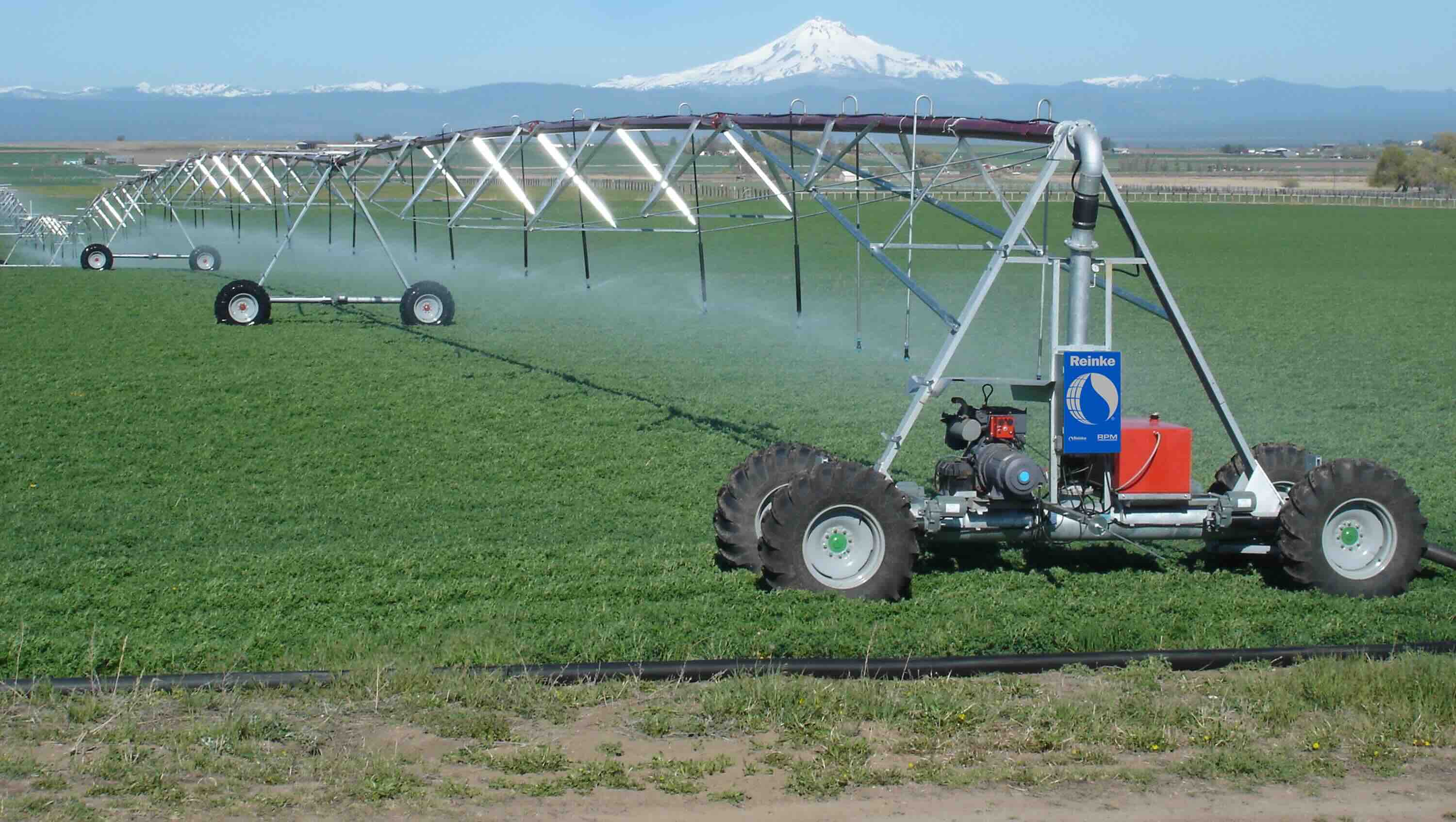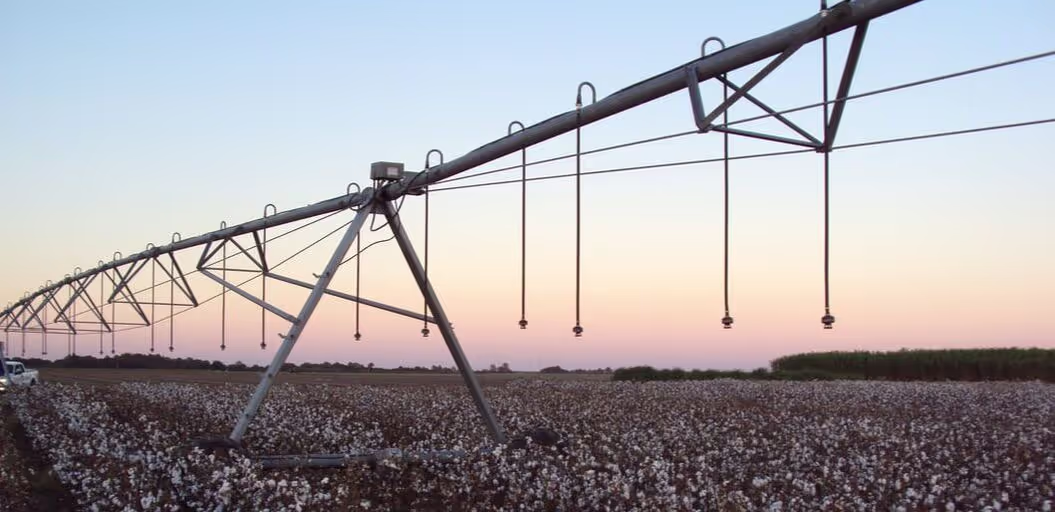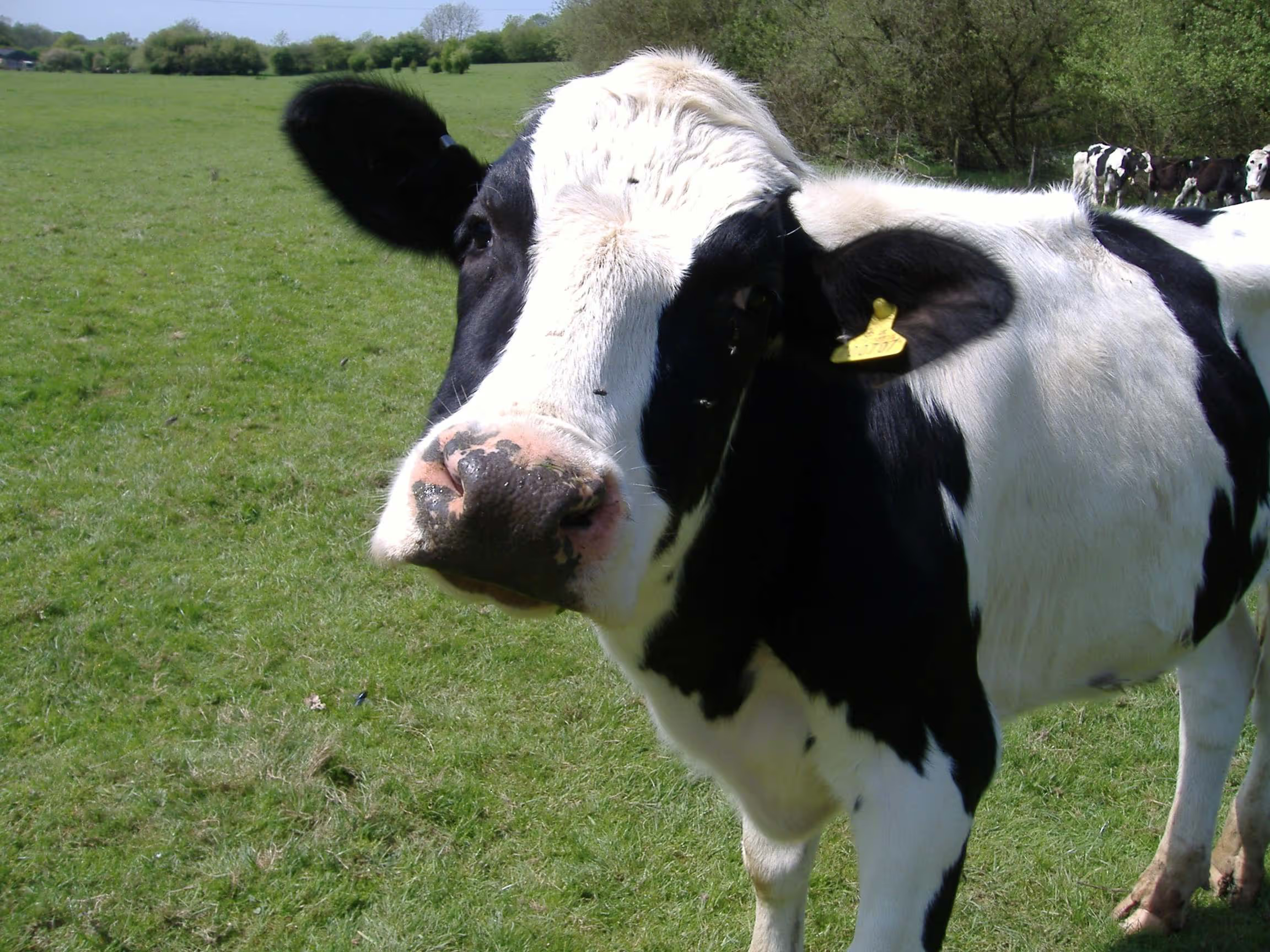When it comes to successful livestock operations, good quality and quantity of forage crops are paramount. From the vast grazing lands to fields dedicated to hay and silage, these crops form the nutritional backbone for dairy herds, beef cattle and other animals. Yet, the inconsistent nature of rainfall often leaves agricultural producers in a situation where yields and profitability are jeopardized. This is where advanced irrigation solutions from Reinke become not just an advantage but a necessity, ensuring consistent water application, maximizing crop potential, and, ultimately, bolstering the entire livestock feeding program.
Why Forage Crops Need Precise Irrigation
The fundamental truth is that forage crops, encompassing everything from diverse hay varieties to lush grasses, demand a steady and precise water supply to reach full potential. Water serves as the primary driver of plant growth, directly influencing cell expansion, nutrient uptake and photosynthetic efficiency. Without adequate moisture, plants become stressed, leading to stunted growth, reduced biomass and a significant drop in nutritional value (Oweis et al., 2017). This directly impacts livestock, as animals that feed on lower-quality forage may experience reduced weight gain, diminished milk production and compromised overall health. Investing in reliable irrigation systems mitigates this risk, transforming unpredictable yields into consistent, high-quality output.
Reinke’s Irrigation Technologies
Reinke's commitment to agricultural efficiency is evident in its cutting-edge irrigation technologies, specifically center-pivot and lateral move systems. Each is engineered to address unique topographical and spatial requirements of different farming operations, ensuring optimal water distribution and minimal waste.
Center-Pivot Irrigation Systems
Center-pivot irrigation systems are iconic fixtures in agricultural landscapes, recognized by their towering central pivot point and long, rotating spans. These systems are ideally suited for irrigating large, circular fields, providing highly efficient and uniform water delivery. As the system rotates, it applies water evenly across the acreage, preventing over- or under-watering in specific zones. This precision is critical for forage crops, where consistent moisture across the field promotes uniform growth, leading to a more homogenous harvest. The ability to control the application rate and timing with sophisticated Reinke control panels allows producers to tailor irrigation schedules to the specific needs of their forage species, accounting for soil type, growth stage and prevailing weather conditions. For example, a newly seeded alfalfa field will have different water requirements than a mature stand of Bermuda grass, and Reinke's systems allow for this precise customization. Studies have shown that center-pivot systems can reduce forage yield variability and extend grazing periods, which is particularly beneficial for dairy operations.
Lateral Move Irrigation Systems
For rectangular or irregularly shaped fields, lateral move technology offers an unparalleled solution for even water distribution. Unlike center pivots that rotate around a fixed point, lateral move systems travel in straight lines across a field, ensuring uniform coverage from one end to the other. This linear movement is particularly beneficial for maximizing the irrigated acreage within noncircular plots, preventing the dry corners often associated with center-pivot systems on square fields. The precise application provided by lateral move systems means that every square foot of forage crop receives the optimal amount of water, fostering consistent plant development and maximizing yield across the entire cultivable area. This evenness is crucial for producing high-quality hay or silage, where variations in moisture can lead to uneven drying, increased spoilage and reduced nutritional content.
Enhancing Plant Resilience
The benefits of Reinke's irrigation systems extend far beyond simply delivering water though. Consistent and controlled hydration fundamentally improves plant resilience. When forage crops receive a steady supply of moisture, their root systems develop more robustly, allowing them to better withstand periods of heat stress, mild drought, or disease pressure. Plants that are not consistently watered often develop shallow root systems, making them highly susceptible to stress when moisture becomes scarce. By contrast, a well-irrigated plant can access water from deeper soil profiles, maintaining turgor and metabolic function even under challenging conditions. This increased resilience translates into more reliable yields, reducing the risk of significant crop losses due to environmental fluctuations.
Supporting Growth from Seedling to Harvest
Furthermore, these systems directly support optimal growth from seedling to harvest. Each stage of a forage crop's life cycle has specific water requirements. Reinke's precision irrigation allows producers to meet these needs with accuracy, preventing both waterlogging, which can lead to root rot and nutrient leaching, and drought stress, which halts growth.
Improving Forage Quality
Fine-tuned water management ensures that plants can continuously absorb essential nutrients, perform photosynthesis efficiently, and allocate resources effectively to biomass production. The result is not just more forage, but more robust, healthier plants with higher dry matter content and improved palatability for livestock. Research consistently shows that optimized irrigation significantly improves dry matter yield and water use efficiency in forage crops.
Impact on Livestock Performance
Ultimately, the most significant impact of Reinke irrigation on livestock operations is the enhancement of overall forage quality. High-quality forage is digestible, nutrient-dense and palatable, directly influencing animal performance. When forage crops are optimally watered, they tend to produce higher levels of crude protein, essential vitamins and minerals, and have more digestible fiber. This translates to superior feed for livestock. For dairy cows, this leads to increased milk production and improved milk solids. For beef cattle, it translates into faster weight gain and better feed conversion ratios. Even for smaller livestock, nutritious forage contributes to better health outcomes and reproductive efficiency. While some studies on deficit irrigation suggest a potential trade-off between yield and certain quality parameters for specific crops, optimal irrigation generally leads to superior overall forage quality that benefits animal nutrition.
Economic Benefits
Consider the economic implications: A marginal increase in forage quality can lead to substantial savings on supplemental feeds and improved animal health, reducing veterinary costs. By maximizing the nutritional value of homegrown forage, producers can reduce reliance on expensive purchased feedstuffs, significantly impacting the bottom line. Reinke irrigation systems empower producers to consistently grow the high-quality forage their animals need, providing a critical competitive advantage in a demanding agricultural market.
A Commitment to Agricultural Sustainability
In an era where agricultural efficiency and sustainability are paramount, advanced irrigation systems are no longer a luxury but a fundamental component of successful livestock operations. Reinke's center-pivot and lateral move technologies offer precise, efficient and reliable water delivery, directly addressing the critical needs of forage crops. By improving plant resilience, supporting optimal growth and enhancing overall forage quality, these systems empower producers to maximize yields, reduce input costs and, ultimately, ensure the health and productivity of their livestock. Investing in Reinke irrigation is a demonstrated commitment to the consistent, high-quality forage that forms the very foundation of a thriving agricultural future.
References
Agricultural Machinerys. (2025, May 16). Lateral move irrigation advantages and disadvantages. Retrieved from https://www.agriculturalmachinerys.com/lateral-move-irrigation-pros-and-cons/
Hunter Industries. (2023, October 10). Exploring the depths of center pivot irrigation systems: An insightful introduction. https://agriculture.hunterirrigation.com/news/2023/10/10/exploring-depths-center-pivot-irrigation-systems-insightful-introduction
Lasseter, B., Green, J., & Larson, J. (2017). Dairy production and center-pivot irrigation systems. Mississippi State University Extension Service. Retrieved from https://extension.msstate.edu/sites/default/files/publications/publications/p3122.pdf
Number Analytics. (2025, June 10). Maximizing efficiency with lateral move. Retrieved from https://www.numberanalytics.com/blog/maximizing-efficiency-lateral-move-irrigation
Oweis, T., Nangia, V., Kemeze, F. H., & Schnetzer, J. (2017). Supplemental irrigation: A promising climate-resilience practice for sustainable dryland agriculture. ICARDA. Retrieved from https://www.researchgate.net/publication/312110971_Supplemental_Irrigation_A_Promising_Climate-resilience_Practice_for_Sustainable_Dryland_Agriculture
Oregon State University. (n.d.). Irrigation systems | Forage information system. Retrieved from https://forages.oregonstate.edu/oregon/topics/irrigation-systems
Wiseconn. (n.d.). Benefits of pivot irrigation for farmers: Key advantages. Retrieved from https://wiseconn.com/benefits-of-pivot-irrigation-for-farmers/
.avif)
.avif)
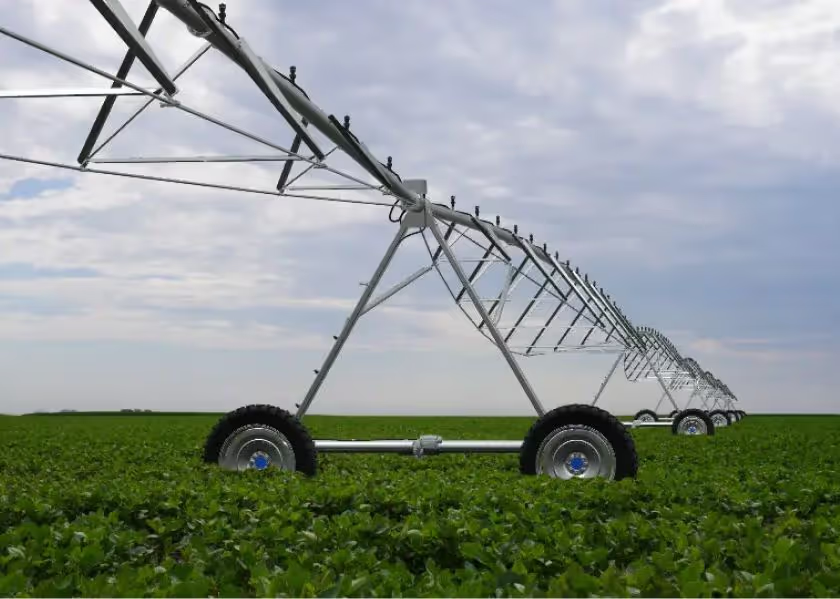
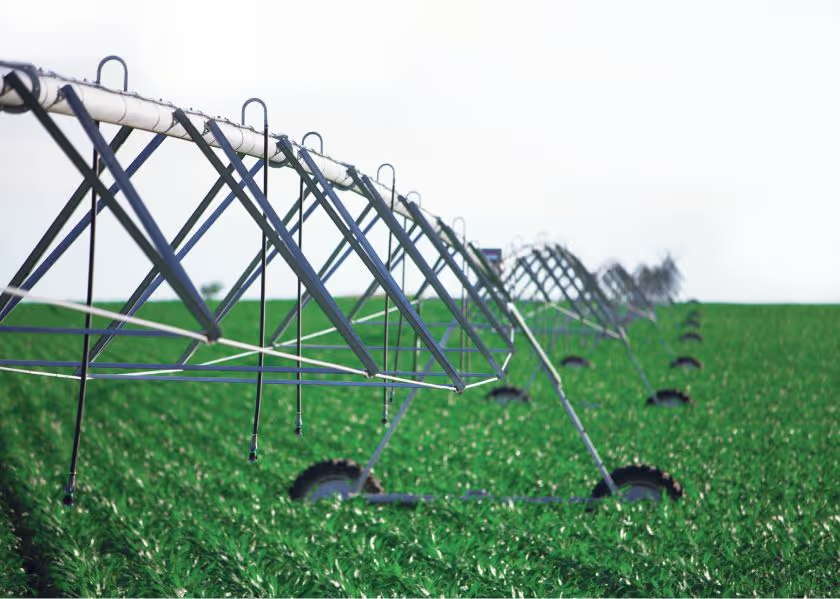
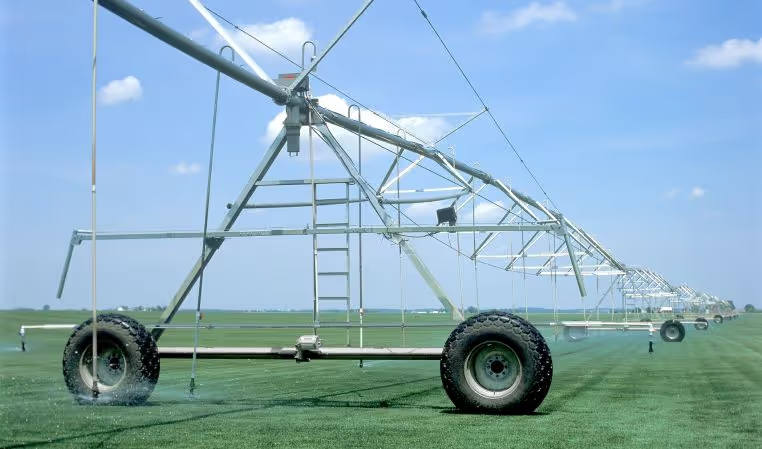
.avif)
.avif)
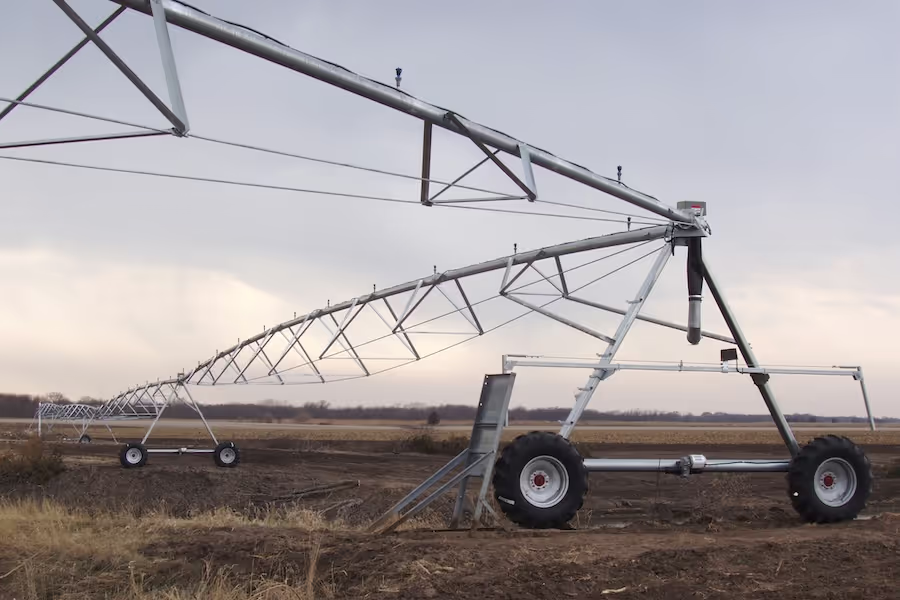
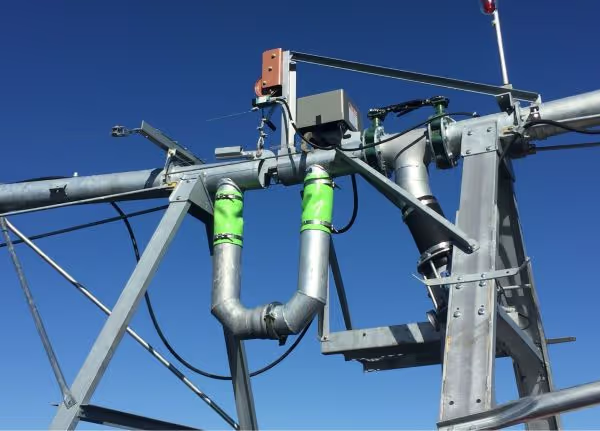

.avif)
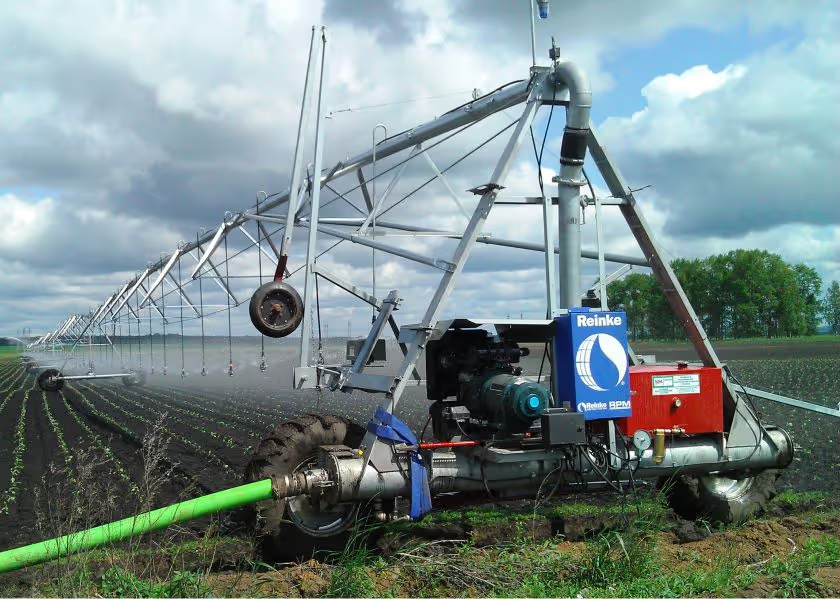
.avif)
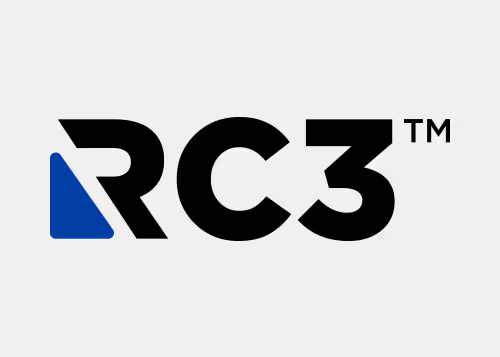
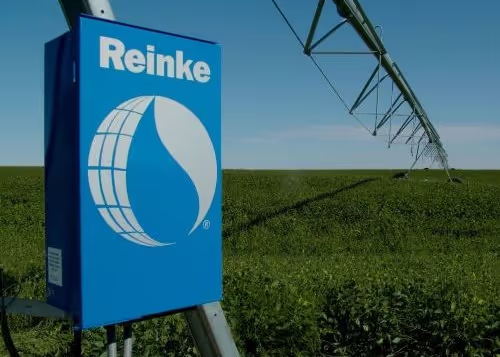
.avif)
.avif)


